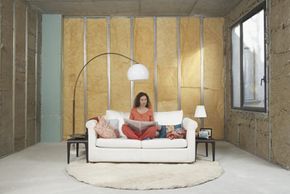Congratulations! You finally won the lottery, and now you have a few thousand dollars to redecorate your living room. Of course you're going to be looking for comfortable and good-looking furniture, but you have another criterion as well. You want your new piece of furniture to be sustainably made and good for the environment. So what should you buy?
While green products are all the rage right now, the furniture industry lags behind. After all, the industry's success is based on folks wanting to redecorate every few years. Until recently, there was no way to really know how sustainable your furniture was, or what sustainability might mean in relation to furniture. Enter the Sustainable Furniture Council (SFC). Formed in 2006, the SFC is working to promote environmentally responsible practices in the furniture industry in the United States. It's also developing an identification label that will help customers find furniture that meets earth-friendly guidelines.
Advertisement
And what might those guidelines entail? The SFC uses a Life Cycle Analysis to measure a product's environmental impact. You may think of a life cycle as the time from the cradle to the grave, but the SFC and its members will be trying to get us to think about how a product can go from cradle to cradle. If a product starts life as a raw material, how can it then serve as a raw material for another product? And what did it do in between those times -- was it shipped around the world, or did it remain local? Did it spend its time emitting harmful chemicals and ruining indoor air quality? Did its maker produce a ton of waste in creating it? These are the types of issues to consider when furniture shopping.
Of course, one of your best bets for earth-friendly furniture is buying secondhand, particularly investing in antiques. This recycled furniture doesn't require any additional environmental impact. Also, when you buy an antique that is more than 50 years old, it lacks the toxic chemicals and substances that some furniture can emit [source: Bartolucci].
But for the sake of this article, let's say you want new furniture. You've been window shopping, and you've narrowed down your options. For that corner by the window, you're either going to go with a mass-produced chair or a handcrafted chair. What is the life cycle of each? Which should you buy? Turn the page to find out.
Advertisement


